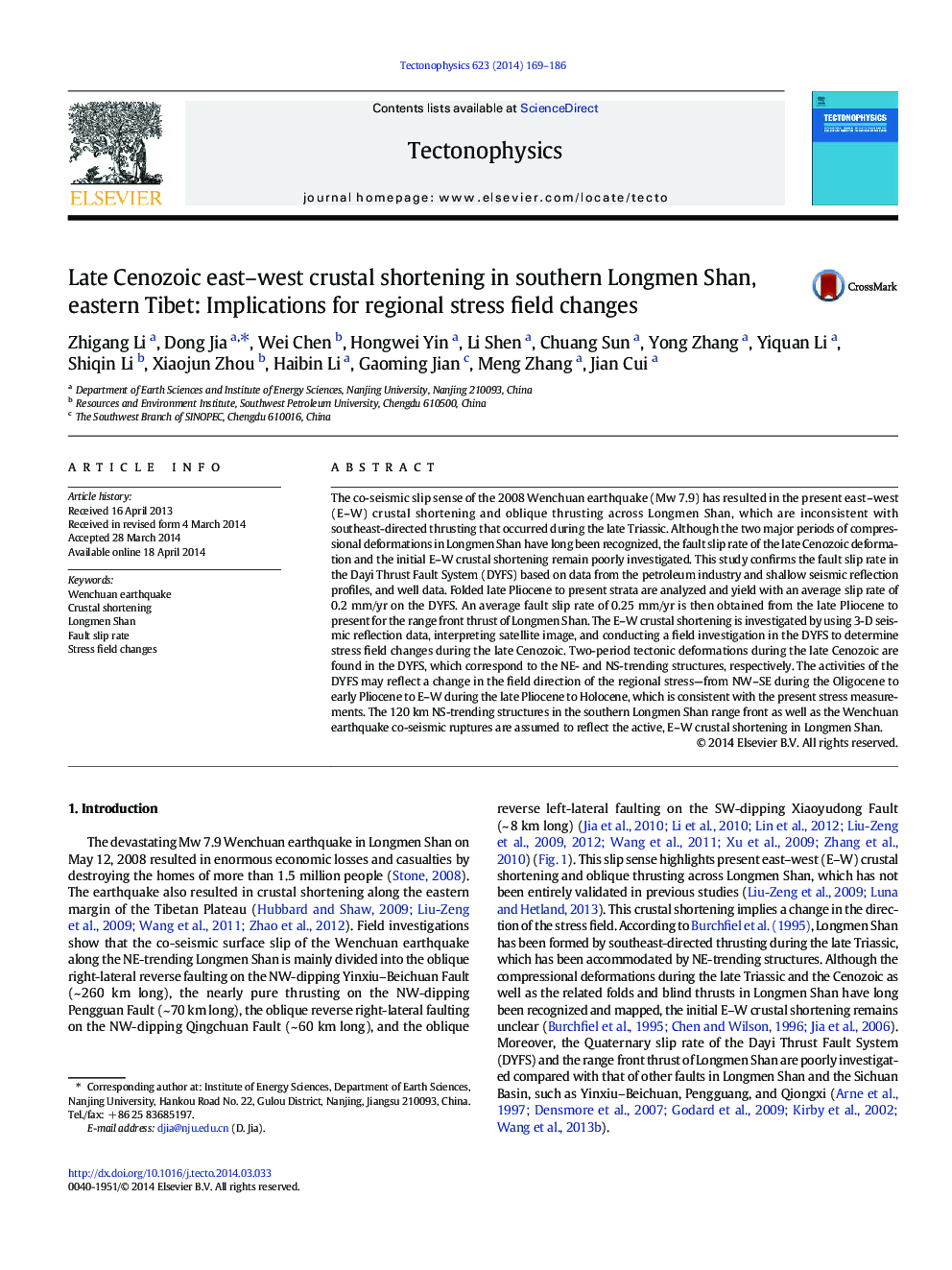| کد مقاله | کد نشریه | سال انتشار | مقاله انگلیسی | نسخه تمام متن |
|---|---|---|---|---|
| 4691990 | 1636767 | 2014 | 18 صفحه PDF | دانلود رایگان |
• An average fault slip rate of 0.2 mm/yr on the DYFS.
• The minimum 0.25 mm/yr fault slip rate for the range front thrust of Longmen Shan.
• A change in the field direction of the regional stress during the late Cenozoic.
The co-seismic slip sense of the 2008 Wenchuan earthquake (Mw 7.9) has resulted in the present east–west (E–W) crustal shortening and oblique thrusting across Longmen Shan, which are inconsistent with southeast-directed thrusting that occurred during the late Triassic. Although the two major periods of compressional deformations in Longmen Shan have long been recognized, the fault slip rate of the late Cenozoic deformation and the initial E–W crustal shortening remain poorly investigated. This study confirms the fault slip rate in the Dayi Thrust Fault System (DYFS) based on data from the petroleum industry and shallow seismic reflection profiles, and well data. Folded late Pliocene to present strata are analyzed and yield with an average slip rate of 0.2 mm/yr on the DYFS. An average fault slip rate of 0.25 mm/yr is then obtained from the late Pliocene to present for the range front thrust of Longmen Shan. The E–W crustal shortening is investigated by using 3-D seismic reflection data, interpreting satellite image, and conducting a field investigation in the DYFS to determine stress field changes during the late Cenozoic. Two-period tectonic deformations during the late Cenozoic are found in the DYFS, which correspond to the NE- and NS-trending structures, respectively. The activities of the DYFS may reflect a change in the field direction of the regional stress—from NW–SE during the Oligocene to early Pliocene to E–W during the late Pliocene to Holocene, which is consistent with the present stress measurements. The 120 km NS-trending structures in the southern Longmen Shan range front as well as the Wenchuan earthquake co-seismic ruptures are assumed to reflect the active, E–W crustal shortening in Longmen Shan.
Journal: Tectonophysics - Volume 623, 2 June 2014, Pages 169–186
